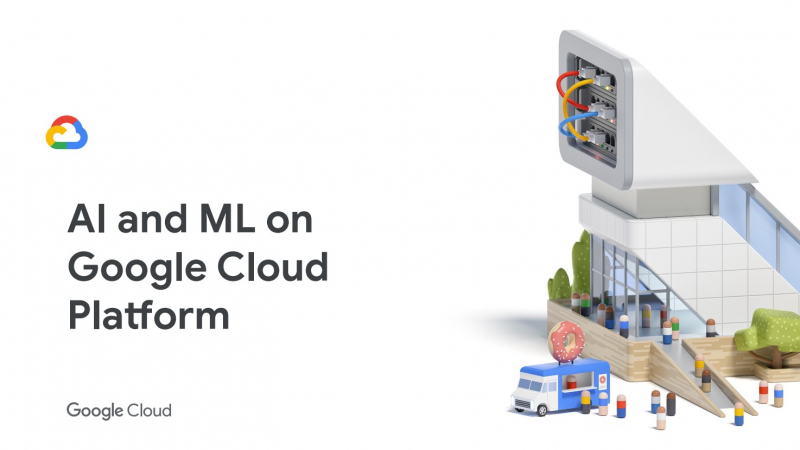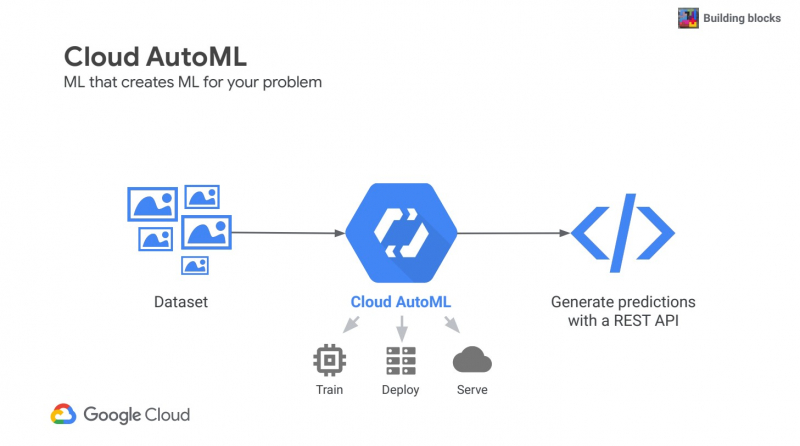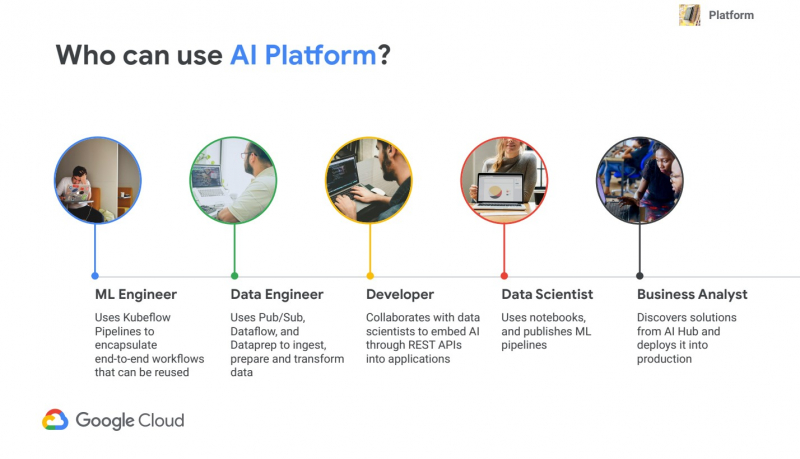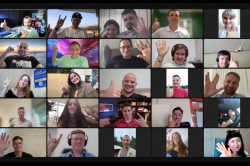General overview of the tools
Google has been actively incorporating artificial intelligence in its products since late 2016: now, machine learning technologies have become an integral part of the most popular services used by over a billion people all over the world. Google Translate makes use of neural networks to improve visual recognition of words, Google Photos can filter photos based on keywords, and Gmail offers a smart-response feature which suggests relevant tips as you write an email.
The company offers its solutions for use by external parties: developers, analysts, business owners and regular users. Depending on their sophistication and complexity of adjustment, all Google machine learning services can be divided into three categories: semi-finished component blocks you can assemble together to solve a specific task; platform technologies that can be used to build a product of practically any level of complexity; and ready-made solutions. The advantage of all of these services is that they can be used by people who don’t have any extensive expertise in the field of machine learning or programming.
Component blocks

Component blocks come in the form of ready-made services aimed at the solution of specific tasks. They can be divided into four categories:
-
services for working with images (Vision, Video Intelligence),
-
services for working with speech (Translation, Natural Language),
-
services for working with dialogs (Dialogflow for chatbots, Text-to-Speech, Speech-to-Text),
-
services for working with structured data (AutoML Tables, Recommendations AI).
All of them operate in a very simple way: a user uploads their raw data – text documents, images, audio and video files – and trains the network to filter or analyze this data and use it to make predictions and forecasts. What we get as an output is a complete API (Application Programming Interface), which you can add into your own app.
In Auto ML Vision, you upload images that are labelled in specific ways, and the model trains and learns to identify them correctly. For example, it’s possible to filter images of items in an online store so that a model would itself put them in different categories: clothes, household appliances, items for children, and others.

AutoML Natural Language can, for example, be used in news aggregators. Its model can be taught to recognize article categories (politics, finance, sports, culture and others) via the analysis of texts and the words they contain.
Auto ML Tables works with data structured in the form of tables, allowing you to significantly save time on data engineering and feature engineering, in other words – arranging of data on the basis of specific features. The data is uploaded in its raw form, without any additional preparation, and allowing integration with different data streaming services.
Based on the inputted data, Auto ML Tables collates various parameters – it chooses which features hold value, conducting feature engineering on behalf of a user, and runs through different variants of neural networks it will use to predict the values of specified fields. The trained model is fully ready for further use – you only need to upload new lines of data and it will analyze them on its own.

BigQuery ML is quite a popular product which is closely integrated with Google’s marketing services and as such often used by analysts and marketing specialists. This is a service for interactive analysis of large datasets stored in Google Storage, for example corpora of queries, tags and so on.
The embedded machine learning functionality allows you to create models within BigQuery without having to use any external services. You can create and use your models in the SQL language syntax – the main tool for working with databases.
To give the users of marketing technologies direct access to data in Google Storage, there is the service Ads Data Hub. The fact is that, since recently, Google doesn’t allow you to take samples from the initial data source it owns. However, in Ads Data Hub you can upload queries using your own data and enrich them using Google data. What we get as a result is this key hole through which you can get access to the enormous amounts of Google data, though it’s not specialized, and use it as a basis for analyzing target audiences, building marketing strategies, and applying these in your own apps.
Platform services

To create fully fledged apps using machine learning, consider the service AI Platform. This is, in essence, an integrated development environment. It’s built on the basis of Kubeflow – a well-known free machine learning platform with open source code.
The Google service offers a complete set of tools for inputting and labeling data, as well as creating and training models. It has all the necessary frameworks and libraries, virtual machine prototypes, and the possibility to use hardware infrastructure to speed up data processing.
AI Platform is closely integrated with Big Query, Dataflow (a service for batch and streaming data processing), and Dataprep (a data preparation service), and allows you to upload the output to Google Data Studio and Dashboard to visualize the results and build graphs.
AI Platform will be useful to machine learning and artificial intelligence specialists for simplifying and expediting their tasks or training; data engineers – for preparing and laying out data; developers – for applying the models in their apps and services; data science specialists – for researching big data and testing their hypotheses; and business analysts and marketing specialists – for analyzing and developing sales strategies.
Ready-made business solutions

In order to streamline the task of applying and introducing machine learning and artificial intelligence technologies, Google produces ready-made solutions of a higher level. Among them is Contact Center AI. These are ready-to-use intelligent chat and voice bots developed in collaboration with major telecom companies. Such bots can be integrated into the work of call centers: using the speech recognition function, they help lessen the load on staff by conducting initial processing of calls and responding to clients’ questions.
To summarize, Google proposes a wide range of both ready-made and semi-finished solutions: services for working with data (uploading, initial processing, storage); processor and graphics accelerators for expediting the neural network training process; ready-to-use libraries and frameworks for working with data; services for preparing and visualizing the end results. For more advanced specialists, there are separate components and blocks that can be assembled together to suit specific needs. On the highest level in terms of complexity, there is a series of finely tuned Auto ML solutions that allow you to further train ready-made models on the basis of your own data.
The full lecture (in Russian) is available on the ML Meetup YouTube channel.





